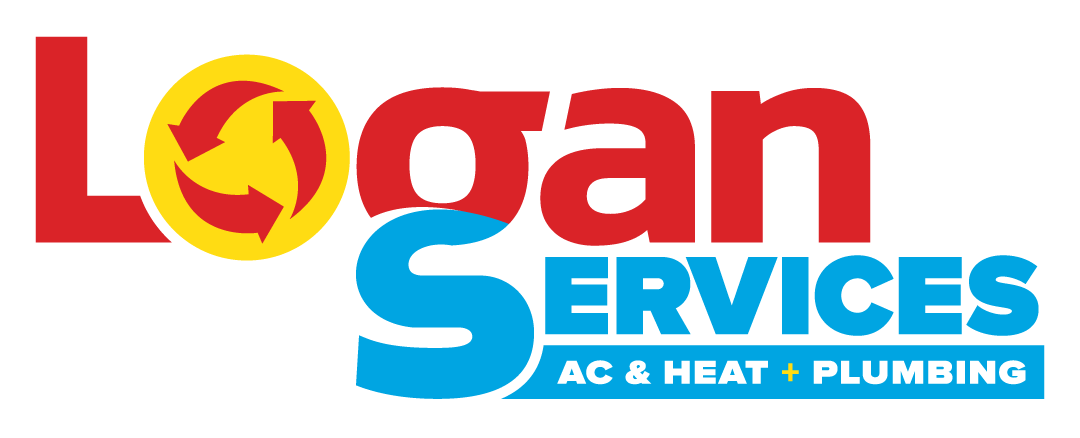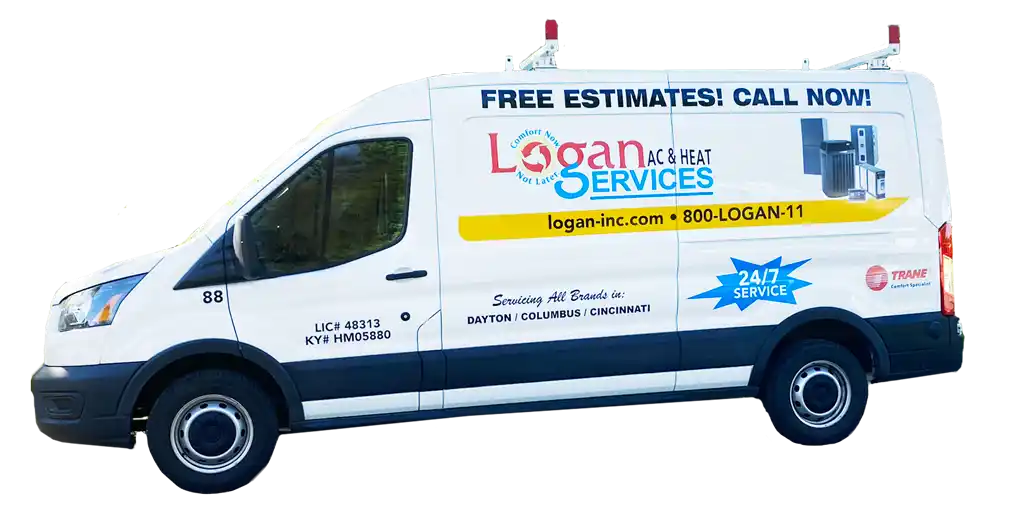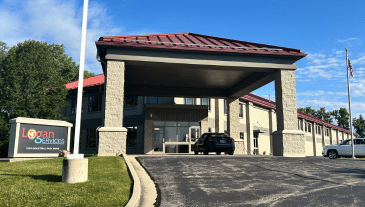Ductless air conditioners, or mini split air conditioners, refer to systems that provide cooling and heating without using air ducts to distribute conditioned air. Ductless systems offer greater zoning flexibility, efficiency, and aesthetics than traditional HVAC systems. This overview will explain how ductless AC works, the types of systems, costs, applications, and the importance of professional installation.
What is a Ductless Air Conditioner?
Ductless air conditioners work by utilizing an outdoor compressor connected by refrigerant lines to indoor evaporator units to provide cooling without ducts. They condition and circulate air via a fan in each indoor unit without ductwork.
Benefits of ductless AC include:
- More energy-efficient zoning of spaces
- Lower operating costs
- Minimal installation impact on structures
- Flexible temperature control
- Quiet operation
Read our guide on Exploring the Benefits of Ductless AC Systems to learn why ductless systems are so great.
Now that you know the basic definition and advantages of ductless air conditioning, let’s examine more closely how these innovative systems work.
How Ductless Air Conditioning Systems Operate
Ductless systems have three main components that work together to provide cooling without ductwork:
- Outdoor Compressor/Condenser Unit: Converts refrigerant from gas to liquid to remove heat from indoor air. It houses the compressor, condenser coil, fan, and some control components.
- Indoor Wall-Mounted Units: Mounted on walls or ceilings of each room. It contains an evaporator coil to absorb heat, an expansion valve, a fan, and filters.
- Refrigerant Lines: Connect the outdoor and indoor units in a closed loop. Allow pressurized refrigerant to move between them.
This allows split systems to transfer heat from inside to outdoors without ducts. The process involves the compressor pressurizing refrigerant gas, which then condenses to liquid after losing heat outdoors through the condenser. The refrigerant passes through the evaporator indoors, evaporating again, drawing heat from indoor air. Fans circulate this newly cooled air.
For more information, read our guides on Unveiling the Mechanics: Ductless AC Operation and Compact Cooling: Mini Splits Explained.
Types of Ductless Air Conditioners
Knowing the differences in ductless system types allows matching the appropriate option to your home’s needs. There are several key ways that ductless AC systems differ based on heating and zones:
- Single vs. Multi-Zone: Single-zone systems have one indoor unit connected to one outdoor unit. Multi-zone systems connect 2-8 indoor units in separate rooms to one larger outdoor unit for whole-home conditioning.
- Cooling Only vs. Heat Pumps: Cooling-only models provide AC to rooms. Heat pumps have heating and cooling to also warm spaces. Most new installations are heat pumps.
- Inverter Systems: Variable speed inverter technology varies compressor speed to save energy by matching cooling capacity to conditions.
Carefully weighing ductless system types and your needs allows selecting the right model with appropriate heating/cooling, zones, and advanced inverter technology benefits for your situation.
Ductless AC Efficiency & Costs
When weighing heating and cooling options for your home, energy efficiency and operating costs are key considerations. Ductless systems have unique advantages but also some downsides to factor in:
- Efficiency Levels: Ductless systems achieve some of the highest SEER and CEER ratings on the market thanks to inverter-driven technology, variable speed operation, and eliminating duct losses. This can translate into lower electricity usage.
- Installation Expenses: Upfront installation costs vary significantly based on the difficulty, number of indoor/outdoor units needed, chosen features, and capacity. Ductwork installation is avoided. The expenses may be more affordable than installing complex central HVAC systems.
- Operating Costs: The ultra-high efficiencies of ductless equipment reduce electricity usage substantially during operation, leading to lower utility bills for homeowners. Intelligent comfort features also minimize runtime, further cutting costs.
There are always multiple variables that determine total long-term costs. An HVAC professional can assess your unique situation and provide accurate quotes for consideration. The high energy savings potential makes ductless systems worth evaluating based on your household cooling and heating requirements.
For a specialized pricing breakdown, check out our Budgeting for Comfort: Ductless AC Price Guide.
Ideal Applications for Ductless AC
Mini splits ductless technology works well in certain applications where traditional HVAC solutions fall short. The flexibility and zoning capabilities open up options for homeowners and businesses with specific needs.
Some top applications well suited for ductless air conditioners include:
- Older Home Retrofits: Homes with radiators or no ductwork can now add cooling by installing ductless units in rooms. This also provides supplemental heat.
- Renovations & Conversions: Attics, garages, additions, and basement renovations into livable spaces benefit from easy ductless installation.
- Multi-Zone Buildings: Restaurants, stores, offices, warehouses, and other commercial buildings with multiple rooms require tailored zoning.
- Precision Temperature Control: For homeowners wanting enhanced control in specific rooms like master bedrooms or hobby rooms.
In many situations, ductless systems present the most cost-effective and practical HVAC option. Mini-split technology pairs flexibility with performance. Ductless air conditioners can solve unique household and business challenges. However, every situation is different, so consulting an experienced HVAC professional is wise. They can assess your spaces and requirements to provide recommendations on potentially integrating ductless solutions.
Ductless Air Conditioner Installation Tips
Properly installing ductless systems involves careful planning and execution to maximize performance. While professional installation is always recommended, some handy homeowners do take on DIY ductless projects.
When installing ductless mini-split air conditioners, here are key considerations:
- Hire a Professional: Given the electrical requirements and refrigerant charging, NATE-certified HVAC technicians have the skills and knowledge to correctly size, place, mount, connect, pressure test, vacuum, charge, and start-up ductless systems to manufacturer specifications.
- Carefully Position Units: Indoor units mount high on walls or ceilings to optimize the zone’s air distribution and temperature consistency. Outdoor condenser units require stable bases with sufficient airflow clearances.
- Enhance Aesthetics: Wall-mounted indoor units are compact with neutral colors to blend into room décor. They take up zero floor space while providing heating and cooling.
If taking on ductless installation as a DIY project, follow these basic steps:
- Research proper mini-split placement guidelines for indoor and outdoor units based on your spaces. Consider aesthetic impacts.
- Mount the indoor unit brackets securely to wall studs or ceilings capable of bearing the weight.
- Mount the outdoor unit to a rigid base or wall with weatherproof fasteners to withstand wind, vibration, and temperature extremes.
- Connect refrigerant piping carefully between the units according to manufacturer specs, properly insulating the lines. Pressure test before finishing.
Avoid mistakes and maximize efficiency by thoroughly educating yourself before any ductless installation. Consulting an HVAC professional first is highly recommended.
Read our guides on Installation Insights: Ductless AC Cost Breakdown and DIY or Pro? Ductless AC Installation Tips for more information.
System Comparisons
Ductless systems have unique advantages and disadvantages compared to other cooling solutions. Evaluating ductless mini-split performance and costs against alternatives helps determine the best fit.
Ductless AC vs. Central AC and Window Units
- Efficiency & Costs: Ductless splits are more efficient than window units, with higher SEER ratings to lower electricity bills. Installation expenses can be lower than central air since no ductwork is involved.
- Temperature Control: Ductless systems allow precision zoning of temperatures in different rooms. This provides more custom control than centrally ducted or window air conditioner units.
- Aesthetics & Space: Thin wall-mounted ductless indoor units have less visual impact than window units protruding into a room. Ductless units also don’t occupy valuable floor space.
- Capability: Multiple ductless systems can replace central ACs for whole-home applications. Ductless capacity ranges from small rooms to large commercial spaces.
Carefully weighing your home’s needs and constraints determines whether a ductless solution or central air, window units, or other options present the best fit. Professional consultation is advised to ensure the optimal system for your goals.
The Logan Difference
When it comes to keeping your home comfortable, Logan Services A/C, Heat & Plumbing has been Greater Dayton’s trusted leader in HVAC solutions since 1969. Our experienced technicians have the expertise to install ductless air conditioning systems to deliver energy-efficient cooling properly. As a family-owned company, we treat every customer like family. Our caring culture and commitment to 100% satisfaction is evident in our 5-star reviews. The Logan Difference means unparalleled quality workmanship, fair, affordable pricing, and friendly, prompt service.
While DIY ductless installation may seem tempting, precision is vital in mounting the wall units, connecting refrigerant piping according to code, and charging the system properly for peak performance. Our NATE-certified professionals have extensive training and field expertise in placing and integrating all system components for optimal comfort and efficiency.
In addition to ductless system installation, we service all makes and models of air conditioners and furnaces. Let us handle all your indoor comfort needs! Our seasoned techs can provide maintenance and repairs for today’s advanced HVAC equipment.
Trust Logan Services A/C, Heat & Plumbing for your next ductless AC install and all heating and cooling needs. Contact us today or schedule a free estimate! For more information, check out Understanding Split AC: A Comprehensive Guide.
Frequently Asked Questions
What is the difference between ductless and central AC?
Ductless systems have an outdoor compressor with refrigerant lines running to wall-mounted indoor units, providing cooling and heating without ductwork. Central systems use ducts to distribute conditioned air from a central unit to vents in different rooms.
How long do ductless AC units last?
The average lifespan of a quality ductless system is 15-20 years. Key components like compressors and heat exchangers are built to last over a decade with proper maintenance.
Can you install ductless AC in an older home?
Yes, the flexibility of ductless systems allows easy installation in older homes without existing ductwork, making it simple to add cooling without major construction.
Do ductless air conditioners need maintenance?
Occasional maintenance, like cleaning filters and clearing debris, helps ensure efficient operation and longevity of over 15 years. Professional technicians should inspect and service the refrigerant system every 2-3 years.
What are common problems with ductless AC?
Some occasional issues include improper refrigerant charge levels, electrical problems, fan malfunctions, WiFi connectivity issues, blocked airflow, and condenser coil buildup. Most problems are easily corrected by a technician.




















